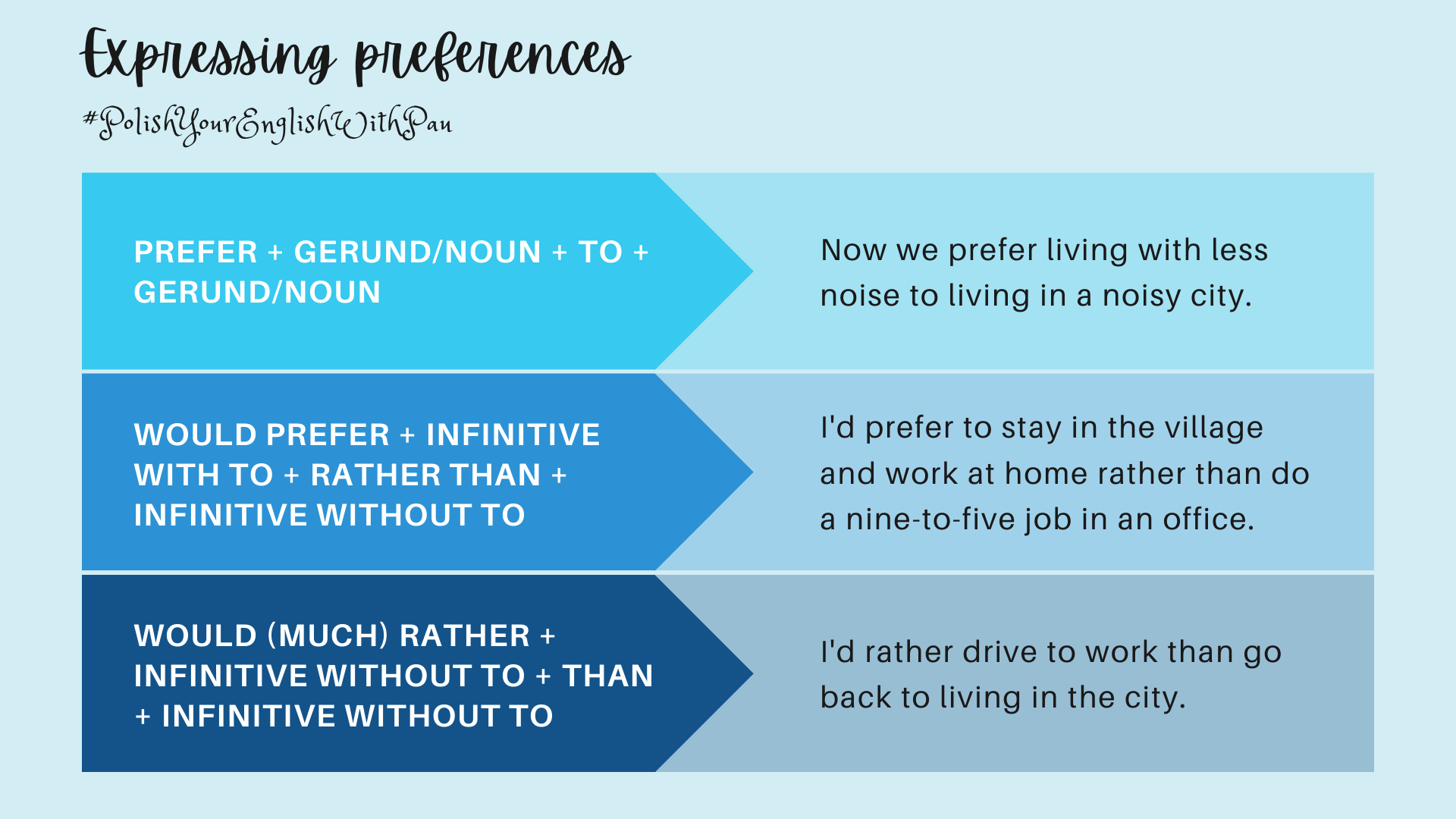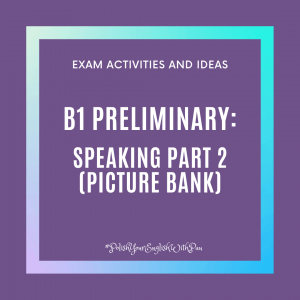B2 First – Speaking Part 2: Pictures Comparison – 3 Steps to success






Now I’d like each of you to talk on your own about something. I’m going to give each of you a photograph and I’d like you to talk about it.
A, here is your photograph. It shows someone celebrating Christmas.

B, here is your photograph. It also shows someone celebrating Christmas.

C, here is your photograph. It also shows someone celebrating Christmas.

 About the task, activity idea and the pictures
About the task, activity idea and the picturesIn this task, the candidate is asked to talk about a picture for about one minute. Some candidates don’t have problems with this task, others struggle a lot as they quickly run out of ideas. This activity aims to help students to better organise their picture description as well as give them some ideas about the different things they can say about any picture.
I saw this activity for the first time at TESOL Convention in Madrid (2018) at a workshop run by Teresa Bestwick (visit her blog for more great ideas!). I decided to add some questions to help the students not only perform the task well but also get a high band for language. Some of the pictures I used (credits: https://pixabay.com/, https://unsplash.com/, https://pexels.com/) are tricky to describe but that’s on purpose. Students often get stressed when they first see their picture. If they practise with “challenging” pictures, I strongly believe they will be better prepared for the exam.
The most important strategy for this part of the speaking exam is to start with a couple of general comments and then start describing the picture in detail, for example. “This picture might have been taken in a park. I can see four people, a woman, a man and two children. They might be family. (…) The woman has long curly hair and brown eyes. She’s wearing a brown cardigan and jeans…”
When we talk about pictures, we always use continuous tenses. Many students forget about that (please, don’t!). Quite often it’s because of the L1 interference that students use simple tenses – it’s important to highlight that the actions in the picture “are happening” while we are talking about them. It might also be a nice idea to use a modal verb in continuous tense, e.g. “The family might be watching a film”. Why do you need to use modal verbs? Have a look at the next paragraph!
If you or your students are not only interested in passing the exam but also getting a good mark, using or encouraging them to use modal verbs is a fantastic idea. Modals of speculation are considered to be B1+/B2 level. So, any construction using these modal verbs is going to be at or above our students’ level. If you want to impress the examiner, starting your picture description with “This picture might have been taken…” is a must!
Sometimes it happens that we start describing the picture and one minute seems endless. This could even happen to a fluent speaker. If you’ve already talked about all the elements of the picture in detail and run out of ideas, it might be a good idea to say how the picture makes you feel. This is a nice way of finishing the task and allows you to talk about the picture until the examiner stops you! Remember, there’s nothing worse than silence during an oral exam!









Teaching English is not always an easy task. Preparing your students for a proficiency exam like PET or FCE takes your teaching to a whole new level. While preparing my students for their B1 exams, I’ve encountered a number of problems which I have ever since been trying to solve. Here is a list of the most common problems and solutions I have come up with so far.
 Hardly ever do I see students excited about their exam practice or, in case of teenagers, English lessons. To spice it up a little bit, I’ve adapted a variety of activities to turn exam practice into fun. For example, I organize treasure hunt games with questions based on exam tasks. This kind of activity particularly appeals to kinaesthetic learners who like to move around. Another idea which I call “break the code” is to give students a series of exam tasks. The correct answers to the first task constitute the password to access the following task until students get till the final task and prize. Apart from that, you can use a variety of online tools, such as Kahoot quizzes and jeopardy games to “smuggle” exam practice and / or relevant vocabulary and grammar. Finally, you can’t go far wrong with personalized tasks. Students love to see their names in activities and they absolutely love finding out about their teacher’s life. Why not take advantage of it?
Hardly ever do I see students excited about their exam practice or, in case of teenagers, English lessons. To spice it up a little bit, I’ve adapted a variety of activities to turn exam practice into fun. For example, I organize treasure hunt games with questions based on exam tasks. This kind of activity particularly appeals to kinaesthetic learners who like to move around. Another idea which I call “break the code” is to give students a series of exam tasks. The correct answers to the first task constitute the password to access the following task until students get till the final task and prize. Apart from that, you can use a variety of online tools, such as Kahoot quizzes and jeopardy games to “smuggle” exam practice and / or relevant vocabulary and grammar. Finally, you can’t go far wrong with personalized tasks. Students love to see their names in activities and they absolutely love finding out about their teacher’s life. Why not take advantage of it?
 This is one of the biggest issues I face on a daily basis. The best solution I have found so far is “Ninja practice”. The idea behind it is that students do lots of mini tasks in a short period of time, e.g. 5 sets of Writing Pt 1 Transformations in two minutes. At first, your students might be taken aback by but soon they will accept Ninja Practice as part of their routine.
This is one of the biggest issues I face on a daily basis. The best solution I have found so far is “Ninja practice”. The idea behind it is that students do lots of mini tasks in a short period of time, e.g. 5 sets of Writing Pt 1 Transformations in two minutes. At first, your students might be taken aback by but soon they will accept Ninja Practice as part of their routine.

A level jump from A2 to B1 may not seem as a big level jump for us, teachers, but it definitely is for our students. They suddenly have to extend what they already know and add some new structures and tenses. So many new grammar items can absolutely overwhelm our students as it’s a lot to absorb and understand. Weaker students particularly struggle with the amount of material and the fast pace of learning. I have found it extremely to flip my grammar lessons.

Instead of presenting new grammar in class and setting further practice as homework, students can prepare before class and we can dedicate more time to practice which can be monitored. Those students who need more time to understand new grammar get an opportunity to learn it at their own pace and are also able to watch the video more times if necessary.
![]() Whenever my students feel like doing nothing in class they always say “Teacher, let’s do sp
Whenever my students feel like doing nothing in class they always say “Teacher, let’s do sp
eaking!” But, when it actually gets to speaking they have nothing to say… I’ve been using WhatsApp to get my students to do their speaking practice, for example part 2 or 3. It’s as easy as giving them a couple of options: “What would you like to do in class today?” Believe it or not, when they get to choose what they want to do, they get pretty involved.
What has also worked with my students and helped them speak freely (good for Part 4) is dogme. It’s a method in which the teacher initiates conversation and improvises the class as the students speak. It’s a good way to forget about the course books, lesson plans and technology from time to time. You can choose any of the “Cambridge topics” and just go with the flow, which is fun!
Finally, you can jump at the chance and customize your speaking tasks using your students’ names/birthdays or upcoming holidays.

Isn’t it frustrating when you correct your students’ writing and you see that they keep making same mistakes? What’s been really helpful to use colour-coding. It helps my students notice their weaknesses and the mistakes they keep making. Alternatively,you can go old-school and ask your students to write the word(s) they tend to misspell 50 times or more. Students find that method slightly shocking at first but they actually admit it works!
It may not be a problem we often have to face but it definitely is something that freaks our students out and can make us feel uncomfortable. Well, as an exam preparation teacher, it’s your responsibility to find out about all the changes.
At first, there may be little sample exams and practice tests and so I would encourage you to recycle and adapt the materials you already have. Be creative and don’t be afraid to prepare your own materials. Finally, hamster, hamster, hamster! Take sample books and materials during conferences, etc. Take all the freebies you can!

Students in exam preparation classes tend to share a goal: taking the exam at the end of the course. Well, sometimes it’s their parents, which makes things a little bit more complicated. Still, you can do a couple of things to keep your students engaged and motivated.
First of all, remember to be supportive at all times. Our students have already got lots on their plates, they don’t need extra worries. Secondly, show your students that they absolutely should not analyse their results in terms of a PASS or a FAIL. We should always highlight the progress and improvement. Finally, you can use gamification platforms, such as ClassCraft, to keep your students motivated and engaged in your lessons.